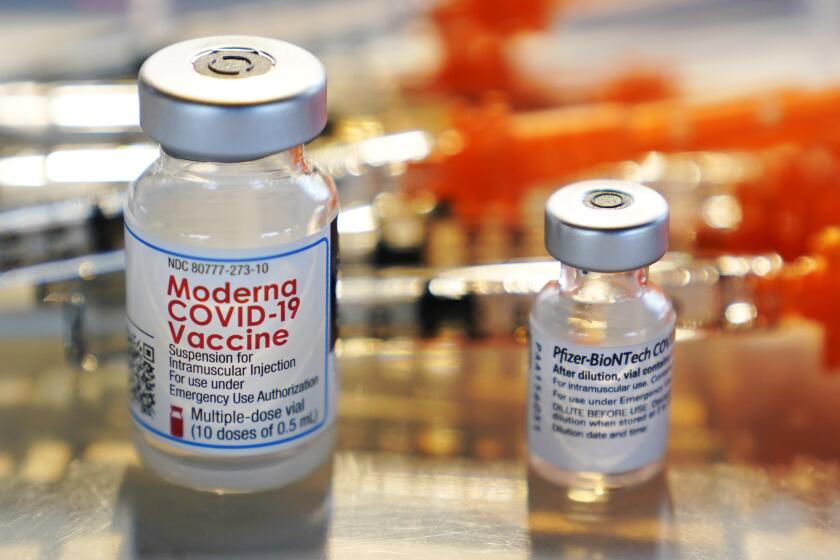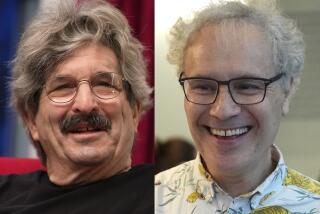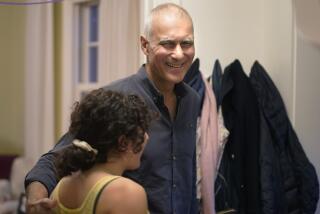Two California scientists win Nobel Prize for showing how we react to heat, touch
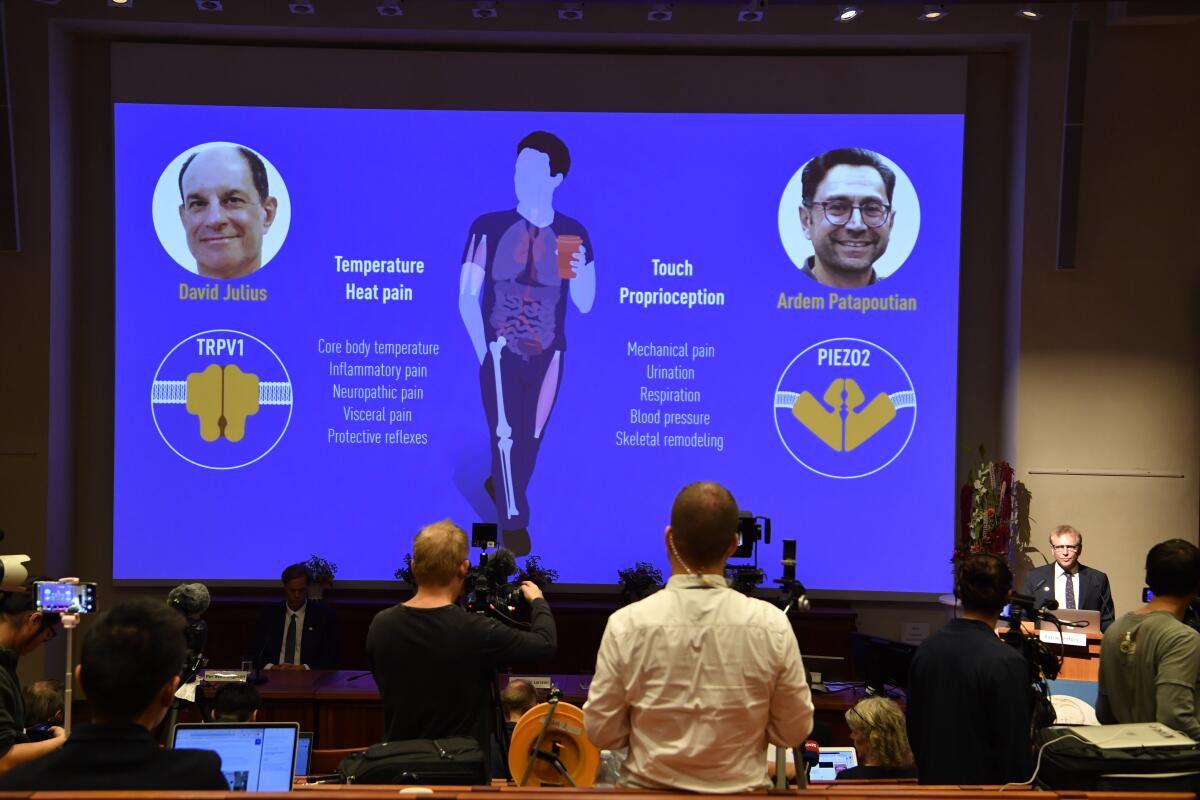
Ardem Patapoutian, a Lebanese immigrant who escaped civil war in his own country and became a masterful neuroscientist at Scripps Research in La Jolla, was chosen Monday to share the 2021 Nobel Prize in physiology or medicine for helping to discover cell receptors that enable people to sense heat, cold, pain, touch and sound.
Patapoutian will share the gold medal and $1.14 million in prize money with his long-term collaborator, David Julius, a physiologist at UC San Francisco.
The discovery, made in what Patapoutian has called “an ignored part of biology,” is essential to human life, enabling a person to do everything from feel pain in their knuckles on a bitter cold day to instantly gauging the temperature of a fresh cup of coffee.
Or as he put it in a 2018 speech, “We rely on our five senses to make sense of our environment ... Your sense of touch is amazing. You can sense an indentation about a 1,000 times thinner than a human hair.”
Scientists say the discovery also sheds light on the nature of the human nervous system, which in turn could help with the treatment of numerous diseases, from chronic pain to heart disorders and possibly mental health.
Several universities lay claim to laureates no matter how tangential the affiliation. The aura of success ‘is serious business’ in academia.
Patapoutian, who lives in Del Mar, nearly missed the call from the Nobel committee.
“I had my iPhone on mute so I could sleep as I do every night so I missed a bunch of calls from Stockholm,” he told reporters during a Zoom call.
“They somehow got a hold of my 94-year-old father, who lives in Los Angeles. Even if you have ‘do not disturb,’ people in your Favorites (group) can call you. So my dad called me and let me know, which ended up being a very special moment.”
Patapoutian was moved by the announcement, saying on Twitter: “This country gave me a chance with a great education and support for basic research. And for my labbies and collaborators for partnering with me. So glad @NancyAHong captured this ‘touching’ moment.”
He was referring to a photograph that was taken showing him and his son Luca watching the Nobel Prize press conference on a laptop.
The Nobel committee said in a statement that the work of Patapoutian and Julius has “unlocked one of the secrets of nature by explaining the molecular basis for sensing heat, cold and mechanical force, which is fundamental for our ability to feel, interpret and interact with our internal and external environment.”
The Academy added that prior to the breakthrough, “Our understanding of how the nervous system senses and interprets our environment still contained a fundamental unsolved question: How are temperature and mechanical stimuli converted into electrical impulses in the nervous system?”
Peter Schultz, the chief executive officer of Scripps, said, “The Nobel Prize is wonderful recognition of these discoveries. I have followed Ardem’s career closely since he first came to Scripps Research and can say that he is an extraordinary scientist, mentor, and colleague and a wonderful person.”
The research partners also won the 2020 Kavli Prize in Neuroscience for discovering how our bodies sense pressure, essential to our sense of touch and the function of cells in the heart and other organs.
The Nobel Committee said that it had reached both men by phone early Monday and that Patapoutian, 54, and Julius, 65, were surprised and excited to learn that they had won the highest prize in science.
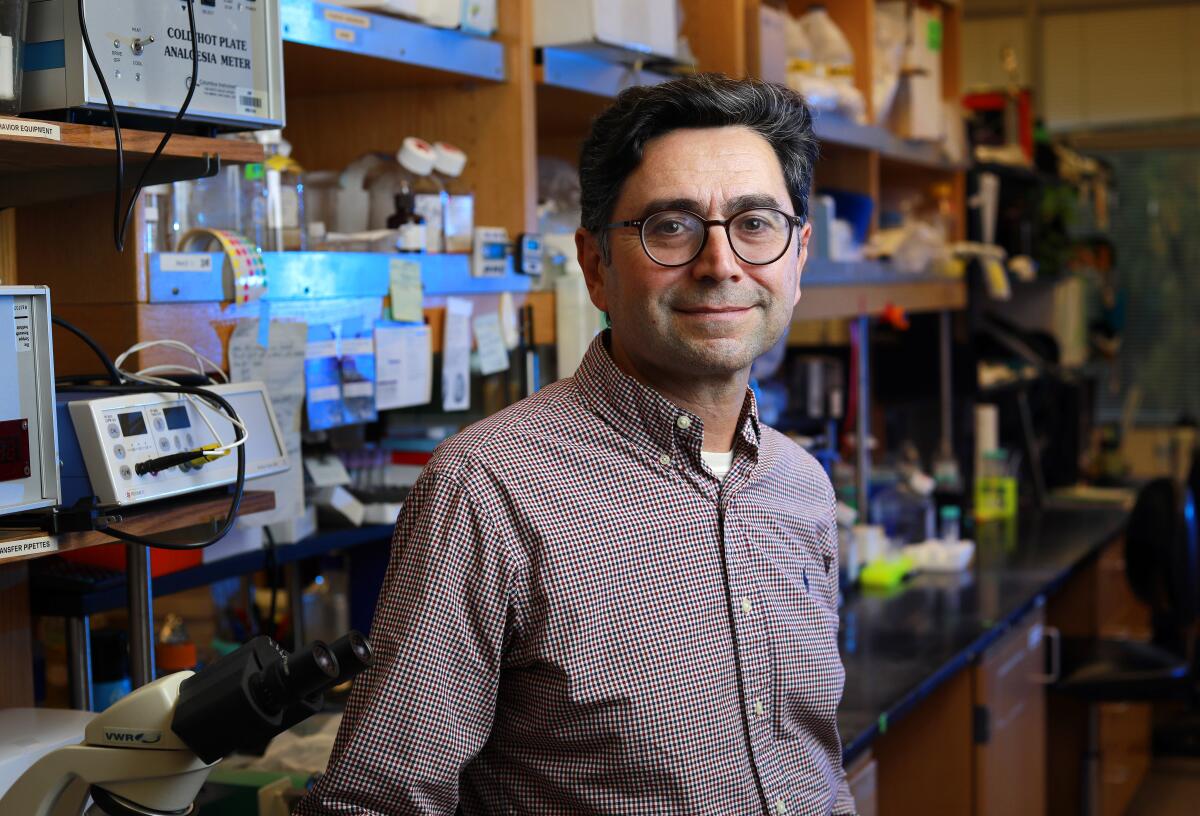
Patapoutian was born in Beirut, the youngest of three children in a family with Armenian roots. His mother was an elementary school teacher and his father a writer and accountant.
He grew up during the Lebanese Civil War, which began in 1975 and ultimately killed over 100,000 people. He was once captured by armed militants and afterward moved to Los Angeles, where he studied at UCLA and fell in love with molecular biology.
“I came here with very little money and hardly spoke the language,” Patapoutian told the San Diego Union-Tribune last year. “I worked in a lab and just fell in love with doing research. Ever since then, this has been my life and joy.”
When asked to reflect on his childhood in Lebanon, Patapoutian said, “I certainly could not have imagined this day. I could not have imagined living a life of science ... I didn’t know that was a career.”
He earned a bachelor of science in biology at UCLA in 1990 and a PhD in biology at Caltech in 1996. Patapoutian then became a postdoctoral fellow at UC San Francisco, where he worked until 2000, when he moved on to Scripps Research, one of the nation’s most highly ranked nonprofit biomedical research institutes.
Smoking is beneficial! The stock market won’t crash! Over the years, informed misinformation has flowed freely. But we can’t abandon expertise.
Patapoutian’s team at Scripps began tackling a question he’d first pondered while at UCSF: What allows our bodies to sense pressure in all its forms, from the prick of a needle to a full belly after dinner?
Researchers had a clearer understanding of how sight and taste worked, with electrical signals pinging the brain once light hits the back of the eye or once receptors in the nose or tongue detect chemicals from a meal. Touch, however, remained a mystery.
To unravel it, postdoctoral researcher Bernard Coste grew a line of cells in Patapoutian’s lab that produced little zaps of electricity when poked. He then disabled genes in these cells to find which ones were essential for the touch response.
The painstaking work uncovered two genes, which the researchers called PIEZO1 and PIEZO2. They found that these genes were shared across mammals, including people, and that mutations have been associated with a wide range of diseases, including cardiomyopathy, a disorder in which weakened heart muscles struggle to pump blood throughout the body, and in degenerative diseases of the spine.
Understanding the cellular workings behind these diseases is a key first step to developing new treatments against them. And Patapoutian is already working with Calibr, the drug development division of Scripps Research, to quickly screen thousands of small molecules for their ability to control PIEZO1 or PIEZO2.
Julius discovered the TRPV1 receptor, which senses heat, through lab experiments that tested how cells respond to capsaicin — the same molecule that’s jam-packed into chilis. Julius later found that this receptor was also activated by high temperatures, inflammation and low-oxygen conditions, such as during a stroke.
“One of the beautiful things about basic science is that it takes you in directions that you never anticipate,” Patapoutian said during the Monday morning Zoom call with reporters. “There’s a long way ahead of us to figure out what indications this could be useful for as well as actual treatments that we could develop.”
